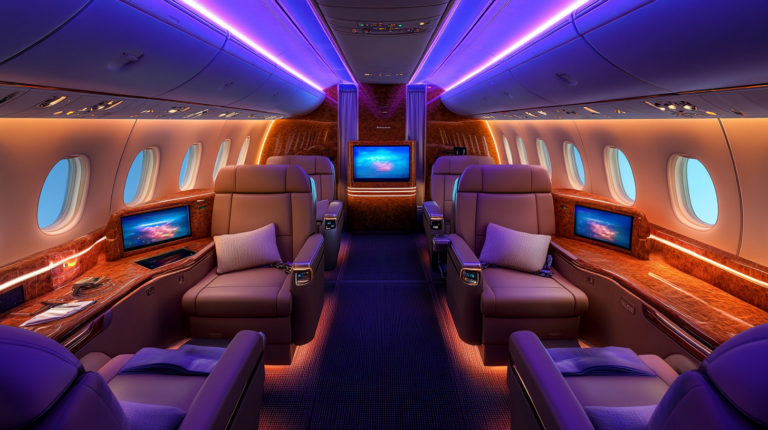What Hawaiian and Alaska’s Loyalty Merger Means for Frequent Flyers
TL;DR
If you only have a boarding-group’s worth of attention, here’s the signal without the noise.
- Alaska Air Group has completed its acquisition of Hawaiian and the combined loyalty framework is Atmos Rewards, with HawaiianMiles funneling in over time. A short, late‑September blackout window affected member logins and redemptions as systems synced (details here).
- The joint map is bigger—direct access spans 141 destinations—and loyalty integration hits a milestone on October 1, 2025.
Two island networks. One loyalty turnstile. Let’s map the moves and make them work for your wallet.
What Changed
This merger moved from rumor to runway. The companies first laid out their plan to combine in a joint announcement. Fast‑forward and Alaska says the acquisition is now complete, with both airlines starting the work toward a single operating certificate with the FAA while keeping daily ops steady and brand identities intact.
Key mile-side milestones: Hawaii’s aviation office says the acquisition was finalized on September 18, followed by a short, planned loyalty blackout to switch over accounts and labels (late September). On branding and tech, both carriers remain separate—sites, reservation systems, and paint—during an integration that Hawaiian says can take up to 18 months. The street signs change first: Mileage Plan and HawaiianMiles route into Atmos Rewards as the shared loyalty grid.
Under the hood, the airlines also flagged cross‑selling as an early convenience—buy select Hawaiian flights on alaskaair.com and select Alaska flights on hawaiianairlines.com as rollout progresses (Alaska; Hawaiian).
Why It Matters

For flyers, this is about more track and more transfer points. The combined network advertises coverage of 141 destinations with 29 international markets, then layers on oneworld and global partners for long‑haul stitching. Translation: more ways to find saver space and cobble together creative routings when nonstop space is tight.
Honolulu becomes the new gravity well—the combined carrier’s second‑largest hub—which strengthens island‑mainland flows and gives West Coast flyers an extra pivot for Asia and the South Pacific. And critically, the company says the brands remain distinct, so soft‑product identity survives while the back‑end wiring consolidates.
Mile Math: What Your Miles Are Likely Worth Now

First principle: flexibility inflates value. Hawaii’s aviation office says members can move balances between the legacy programs at a 1:1 ratio and without fees. That’s a lever. You can price an award in both systems and push points to whichever side wins on value or partner access.
Second, timing shapes the chart. Hawaiian states that HawaiianMiles fully consolidates into Atmos Rewards on October 1, 2025. Between now and then, expect iterative tweaks: renamed earning units (miles are now “points,” status credits become “status points”), evolving dynamic pricing, and partner availability that may not always mirror across engines. I recommend tracking your personal cents‑per‑point on a few regular routes—interisland connectors, West Coast trunk lines, and a partner long‑haul—so you know when a redemption beats your baseline.
Two guardrails I use: burn when an itinerary offers an obvious comfort delta (a better seat, a better lounge, or cleaner connection) at a reasonable point outlay; bank when pricing feels frothy and partner saver space looks poised to improve. Keep transfers nimble and let the award chart come to you.
The Play: What Frequent Flyers Should Do Now
Here’s your traveler‑first checklist—quick, clean, and geared for value.
- Protect your balance. Hawaiian told members to take screenshots and wrap essential redemptions ahead of the late‑September outage (advisory). Keep that habit for any future maintenance windows.
- Shop both sides. Cross‑selling is rolling out, so price cash and award options on both sites and book the better result (Alaska; Hawaiian).
- Use free transfers strategically. With fee‑free transfers available between Mileage Plan and HawaiianMiles (state update), you can consolidate for a big redemption or arbitrage partner awards.
- Align your status. Hawaiian says Pualani elites are mapped to corresponding Atmos tiers and Premier Club to Atmos Silver, with lifetime recognition preserved (loyalty updates). Add your Atmos number to upcoming PNRs so upgrade and priority benefits attach.
- Know your lounge door. The state announcement confirms Alaska Lounge access applies when you’re flying Hawaiian in eligible cases—useful on West Coast connectors and HNL runs (details).
Bottom line: keep balances mobile, compare every redemption across engines, and let your benefits ride with the itinerary you actually fly.
Practical Changes to the Travel Experience

Onboard internet is getting a speed boost. Alaska told Business Insider it’s bringing Starlink to its full fleet with completion targeted for 2027, and streaming‑quality Wi‑Fi will be free for Atmos Rewards members. That’s real value per hour: fewer day passes, more work (or watch) at cruise.
Earning also gets modular. Alaska says members will be able to choose how they earn—per mile flown, per dollar spent, or per flight segment—and highlighted that short hops like Honolulu–Maui make segment earning attractive, with each segment worth 500 points. Add some ground smoothing as cross‑selling arrives on both sites (Alaska; Hawaiian), and your pre‑trip tab‑hopping should shrink.
Operationally, the carriers are still separate while they work toward an integrated passenger system and single operating certificate (Alaska). Expect incremental improvements rather than overnight transformation.
Buzz Verdict and Next Steps
Buzz verdict: Two island lines just became one metro map—more stations, one fare card, and a smoother ride if you mind your transfers.
Next steps for savvy flyers: monitor a few sample routes weekly to learn the new dynamic rhythms; enroll and use your Atmos login so lounge and Wi‑Fi perks attach by default; and keep an eye on policy pages as upgrade priority, earning choices, and partner quirks evolve alongside FAA and system‑integration milestones (Alaska).
Barry B.’s Take
I see three levers that matter more than the rebrand: optionality, interoperability, and time. Optionality is the fee‑free, 1:1 transfer bridge that turns two ponds into one lake for award fishing. Interoperability is the cross‑sell and partner layer—more doors where saver space can hide. Time is the hidden cost: integration lags mean occasional glitches, but they also create windows where one site prices better than the other. If you treat points like a refillable transit card, your best move is agile routing—check both portals, shift balances only when the value spike is obvious, and let comfort tip the tie. The prize isn’t chasing the lowest point price; it’s maximizing value per hour without sacrificing the seat or the schedule.
Key Takeaways
For the engaged flyer, here’s how to turn the news into moves.
- Use fee‑free transfers as an arbitrage tool—price awards on both sides and only shift balances when the redemption clearly beats your personal baseline.
- Expect gradual gains, not overnight magic. The brands fly separately while tech and policy catch up, so check both engines for space and fares before you book.
- Build your earning mix around your route map: segment earning shines on short hops, while per‑mile or per‑dollar can suit longer runs.
- Count comfort, not just cost. If a lounge stop and a better seat save energy on arrival, that’s value—especially with Starlink onboard for members.
FAQ
Q: Will my HawaiianMiles automatically convert to Atmos Rewards, and should I redeem before any blackout?
A: Hawaiian says HawaiianMiles fully consolidate into Atmos Rewards on a stated integration date, and the airline previously flagged a short late‑September blackout while systems synced (conversion details; blackout advisory). Practical play: book time‑sensitive trips early and keep screenshots of balances before any maintenance windows.
Q: Can I transfer miles between Hawaiian and Alaska accounts for free?
A: Yes. The state’s aviation office confirms members can move balances between Mileage Plan and HawaiianMiles at a 1:1 ratio without fees. That flexibility lets you price both engines and push points to the better redemption—just avoid last‑minute transfers when you’re chasing scarce partner seats.
Q: What happens to lounge access and status recognition right now?
A: Alaska Lounge members and their guests can access lounges when flying Hawaiian in eligible cases (state update). Hawaiian says Pualani elites are mapped to corresponding Atmos tiers, with Premier Club mapped to Atmos Silver and lifetime recognition preserved (tier mapping). Add your Atmos number to bookings so perks attach correctly.
Q: Is Starlink Wi‑Fi live for everyone yet, and will it be free for loyalty members?
A: Alaska told Business Insider it’s rolling Starlink across the fleet with completion targeted later, and that streaming‑quality Wi‑Fi will be free for Atmos Rewards members. Hawaiian began deploying the service earlier. Log into your loyalty profile onboard to ensure access tags to your reservation as rollout expands.
For more fast, traveler‑first reporting like this, keep your tab tuned to milesBUZZ.







